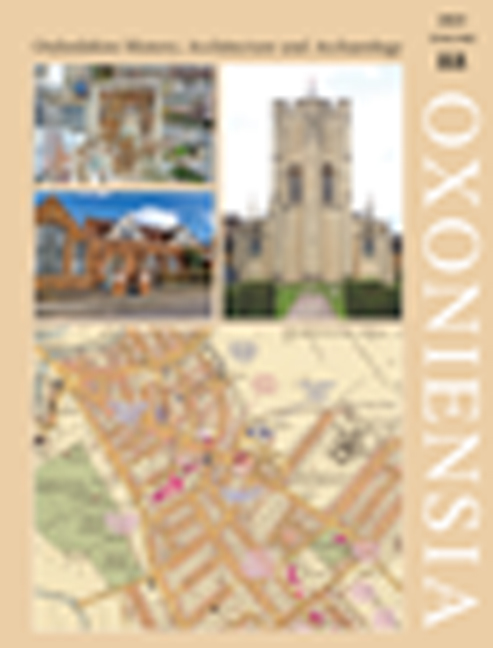Excavations at St Georges Road, Wallingford: Evidence for a Complex Sequence of Defences near to the West Gate of the Late Anglo-Saxon Burh
Published online by Cambridge University Press: 15 May 2024
Summary
SUMMARY
Excavations in advance of development at Cross Keys public house, St Georges Road, Wallingford revealed part of a substantial ditch, which was located to the west of the extant late Anglo-Saxon burh rampart. Limited dating evidence suggested that the ditch was contemporary with the earliest phase of the burh and it was possible, though not proven, that it represented the northern extent of wider, or enhanced military outworks associated with the west gate. A note by John Blair proposes an alternative hypothesis: that the large primary ditch at Cross Keys represented the north-west corner of an earlier phase of the fort, possibly dating from the mid to late eighth century. Such a sequence is compatible with the earliest radiocarbon dates so far obtained from Wallingford. A linear bank, which was constructed of imported chalk marl, was subsequently laid along the line of the infilled ditch, possibly as early as the mid eleventh century, or shortly thereafter. The purpose of this bank was not entirely clear, although, a military function was a distinct possibility. A further ditch to the west of the bank appeared to be of a later date and may have been related to a boundary shown on historic mapping, however, this feature was only partially revealed during the excavations and its interpretation remained highly uncertain.
This report presents a summary of archaeological investigations undertaken by Foundations Archaeology in 2013 to 2014 at Cross Keys public house, St Georges Road, Wallingford. The works consisted of an archaeological strip, map and sample excavation and subsequent watching brief, which were conducted in advance of, and during, the construction of two residential dwellings. The works complied with an approved Written Scheme of Investigation (WSI) and the relevant IfA Standard and Guidance. A summary of the results of the fieldwork is presented below; further detailed records are contained within Foundations Archaeology’s post-excavation assessment report. The project was commissioned by Brakspear.
The study area is located immediately south of St Georges Road car park and approximately 50 m north of the junction of St Georges Road, High Street, Croft Road and Station Road (Fig. 1). At the time of the fieldwork the site consisted of an area of hardstanding, which was associated with the Cross Keys public house to the south. The topography around the site is generally flat at a height of approximately 48 m above OD.
- Type
- Chapter
- Information
- Oxoniensia 88 , pp. 323 - 342Publisher: Boydell & BrewerFirst published in: 2024



